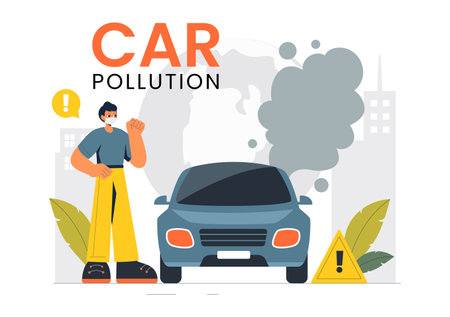1. Understanding Fuel Efficiency Basics
When it comes to owning a car in the United States, fuel efficiency is more than just a buzzword—it’s a big deal for both your wallet and your daily routine. But what exactly does “fuel efficiency” mean? In simple terms, fuel efficiency describes how far your vehicle can travel using a specific amount of fuel. The more miles per gallon (MPG) your car gets, the less money you spend at the gas pump. This matters whether you’re commuting to work every morning or heading out on a family road trip across state lines.
Why Fuel Efficiency Matters for American Drivers
For most Americans, driving is an essential part of life. We rely on our cars to get to work, run errands, take kids to school, and enjoy weekend adventures. Because of this, understanding how efficiently your car uses fuel can help you:
- Save money on gas over time
- Reduce trips to the pump—especially helpful during busy weeks
- Lower your carbon footprint and help protect the environment
- Keep your car running smoothly by reducing engine strain
Fuel Efficiency in Everyday Life
The importance of good fuel efficiency shows up in everyday situations. For example, if you have a long commute or love taking road trips, even small changes in MPG can make a noticeable difference in your monthly expenses.
| Miles Driven Per Week | Car A: 20 MPG | Car B: 30 MPG | Gas Saved Per Week (at $3/gallon) |
|---|---|---|---|
| 200 miles | 10 gallons ($30) | 6.7 gallons ($20) | $10 |
| 350 miles | 17.5 gallons ($52.50) | 11.7 gallons ($35) | $17.50 |
A Closer Look at Fuel Efficiency Ratings
You’ll often see cars rated with city and highway MPG numbers by the EPA (Environmental Protection Agency). These ratings give you a general idea of how much gas you might use under different driving conditions. However, real-world factors like weather and seasonal changes can affect these numbers—which we’ll explore further in upcoming sections.
Key Takeaway for Drivers
The bottom line is that understanding fuel efficiency isn’t just about numbers; it’s about making smart choices that fit your lifestyle and save you money throughout the year.
2. How Cold Weather Impacts Gas Mileage
When winter rolls around, you might notice your car’s gas mileage dropping even though your driving habits haven’t changed much. Cold weather can have a big effect on fuel efficiency, and it’s something drivers all over the United States experience every year. Let’s break down how chilly temperatures, snowy roads, and even letting your car idle to warm up can all add up to more frequent trips to the gas station.
Why Does Cold Weather Hurt Fuel Efficiency?
Your car’s engine needs to work harder when it’s cold outside. When temperatures drop, engine oil gets thicker, making it tougher for the moving parts to do their job smoothly. Also, gasoline doesn’t vaporize as easily in cold air, so your engine has to burn more fuel just to get up to normal operating temperature.
Main Factors Affecting Gas Mileage in Winter
| Winter Condition | How It Affects Fuel Efficiency | Real-Life Example |
|---|---|---|
| Cold Temperatures | Engines take longer to reach optimal temperature; thicker fluids increase resistance | You drive a short distance to the grocery store, but your engine never fully warms up, using more gas than usual |
| Snow and Ice | Tires have more rolling resistance; snow buildup can add weight and slow you down | Your commute takes longer because of slippery roads and packed snow under your car, causing lower MPG |
| Idling to Warm Up | Burns fuel without moving the car; extra idling time decreases overall MPG | You let your car run for 10 minutes before heading out in the morning, wasting fuel while parked |
| Use of Heaters and Defrosters | Adds electrical load, making the engine work harder (especially with older cars) | Turning on full heat and window defrost eats into your fuel economy during chilly mornings |
The Impact Is Real: An Everyday Scenario
Imagine it’s January in Minnesota or Ohio. You start your car early to melt the ice on your windshield. After driving through slushy streets with the heater blasting, you notice you’re filling up your tank way sooner than you did back in October. This isn’t just your imagination — studies show that gas mileage can drop by as much as 10-20% in cold weather compared to warmer months.

3. The Effects of Hot Weather on Your Car’s Performance
How High Temperatures Impact Fuel Efficiency
Summer heatwaves are a common part of life in many parts of the U.S., from California to Texas and beyond. While everyone loves a sunny day, hot weather can actually make your car use more fuel. When temperatures climb, your engine has to work harder, fluids evaporate faster, and tires can lose pressure—all of which can lower your miles per gallon (MPG).
Air Conditioning: A Real Gas Guzzler
Cranking up the A/C is almost automatic when it gets hot out, but did you know that blasting your car’s air conditioning can reduce fuel efficiency by up to 20%? Air conditioners put extra load on the engine, which means your car burns more gas to keep you cool.
How Much Can A/C Use Affect Fuel Efficiency?
| Outside Temperature (°F) | A/C Usage Level | Estimated MPG Drop (%) |
|---|---|---|
| 75-85 | Moderate | 5-10% |
| 85-95 | High | 10-15% |
| 95+ | Very High/Max | 15-20% |
Other Hot Weather Challenges
- Tire Pressure: Heat causes air inside tires to expand. Overinflated or underinflated tires can both hurt your fuel economy. It’s smart to check your tire pressure regularly, especially during a heatwave.
- Evaporation: Gasoline evaporates faster in high temperatures, which means you could lose some fuel before it even makes it to the engine—especially if your gas cap isn’t tightly sealed.
- Engine Cooling: In extreme heat, your car’s cooling system works overtime. If your radiator or coolant isn’t in good shape, this extra strain can lead to overheating and less efficient performance.
Quick Tips for Hot Weather Driving
- Park in the shade when possible to reduce interior heat buildup and minimize A/C use.
- Use sunshades to keep your car cooler inside.
- Avoid idling with the A/C running for long periods.
- Check tire pressure at least once a month during summer months.
- Keep up with regular maintenance—especially coolant and oil levels.
If you’re driving through a summer scorcher, keeping these tips in mind can help you save gas and keep your ride running smoothly.
4. Seasonal Fuel Formulations and Their Role
When you fill up your tank at an American gas station, you might not realize that the gasoline you’re using isn’t always the same year-round. Gas stations in the United States adjust their fuel blends depending on the season, switching between summer and winter formulations. These changes are made to help your car run better and to meet environmental standards, but they also have a direct impact on your car’s fuel efficiency.
What Are Seasonal Fuel Blends?
Gasoline is made up of different chemicals and additives, and its recipe changes with the seasons. In simple terms, “summer-blend” gasoline is formulated to reduce air pollution during hot weather, while “winter-blend” gasoline is designed to help engines start more easily when it’s cold outside.
Key Differences Between Summer and Winter Gasoline
| Type | Main Purpose | Volatility | Effect on Mileage |
|---|---|---|---|
| Summer-Blend Gasoline | Reduce smog & emissions in hot weather | Lower (less likely to evaporate) | Usually better fuel efficiency |
| Winter-Blend Gasoline | Improved engine starting in cold weather | Higher (easier to evaporate) | Slightly lower fuel efficiency |
Why Do These Blends Affect Your MPG?
The main difference comes down to something called volatility—how easily the fuel turns into vapor. In the summer, fuel with lower volatility is used because it helps prevent excessive evaporation, which can cause pollution and waste. This summer formula burns more efficiently, giving you a few extra miles per gallon (MPG) compared to winter-blend gasoline.
In the winter, gasoline needs to vaporize more easily so your engine can start even when it’s freezing. That’s why winter-blend fuel contains more butane, which helps with cold starts but isn’t as energy-dense as summer fuel. As a result, you might notice your MPG drop by 1-3 miles per gallon during colder months—even if you drive the same way.
Quick Comparison: Seasonal Fuel Mileage Impact
| Season | Average Change in MPG* |
|---|---|
| Summer (using summer blend) | No loss; sometimes gain 1-2 MPG |
| Winter (using winter blend) | Lose about 1-3 MPG compared to summer blend |
*Actual results may vary based on vehicle type and driving habits.
If you’ve ever wondered why your car seems to use more gas in the winter, now you know—it’s not just the temperature or how long you warm up your car. The very gasoline itself changes to match the season, affecting your car’s performance and efficiency.
5. Tips for Maximizing Fuel Efficiency Year-Round
Tire Care: Keep Your Ride Rolling Smoothly
Your tires play a huge role in how much gas you burn, especially as the weather changes. Cold air makes tire pressure drop, while summer heat can make it rise. Check your tire pressure at least once a month—especially when seasons change—and keep it at the recommended level (you’ll find this info on a sticker inside your driver’s door or in your owner’s manual). Under-inflated tires cause more drag, which eats up more fuel.
| Season | Recommended Tire Care |
|---|---|
| Winter | Check tire pressure weekly; consider winter tires for better grip |
| Summer | Monitor pressure during heat waves; inspect for cracks or wear |
| Spring/Fall | Adjust pressure with temperature swings; rotate tires if needed |
Smart Driving Habits: Drive Like You’re Paying for Every Drop (Because You Are!)
- Go easy on the gas and brake: Quick acceleration and hard braking use more fuel. Try to accelerate smoothly and coast to a stop when you can.
- Avoid idling: Modern cars don’t need to “warm up” for long. If you’re waiting for someone, turn off your engine after a minute or two.
- Use cruise control on highways: It helps maintain a steady speed, which saves gas compared to constant speeding up and slowing down.
- Avoid hauling heavy loads: Clean out your trunk and remove roof racks when not in use—extra weight and wind resistance lower MPG.
Stay on Top of Car Maintenance
No matter the season, regular maintenance keeps your car running efficiently. Here’s what to focus on throughout the year:
- Oil Changes: Use the oil grade recommended by your manufacturer for best performance in all temperatures.
- Air Filter: A clean air filter helps your engine “breathe” better, improving fuel economy.
- Spark Plugs: Worn spark plugs make your engine work harder and waste gas—replace them as needed.
- Fluids: Check coolant and transmission fluids regularly, especially before extreme weather hits.
Climate Control: Use AC and Heat Wisely
Your heater uses energy from the engine, and your air conditioner puts extra load on it too. In summer, try parking in the shade or using a sunshade so you don’t have to blast the AC right away. In winter, dress warmly so you can set the heat lower. Cracking the windows at highway speeds actually increases drag—so choose AC over open windows when driving fast.
Your Seasonal Fuel Efficiency Checklist
| Task | Spring/Fall | Summer | Winter |
|---|---|---|---|
| Tire Pressure Check | X (adjust for temp) | X (watch overinflation) | X (weekly checks) |
| Oil & Fluids Check | X | X (before road trips) | X (before cold snaps) |
| Replace Air Filter/Spark Plugs | X (as needed) | X (as needed) | X (as needed) |
| Edit Driving Habits | X (avoid rapid starts/stops) | X (use AC smartly) | X (gentle warm-up, avoid idling) |
| Remove Roof Racks/Extra Weight | X | X (reduce drag for vacations) | X (clean out trunk after holidays) |
If you stay proactive with these simple tips, you’ll save money at the pump and help your car handle every season—rain, shine, snow, or sun!


